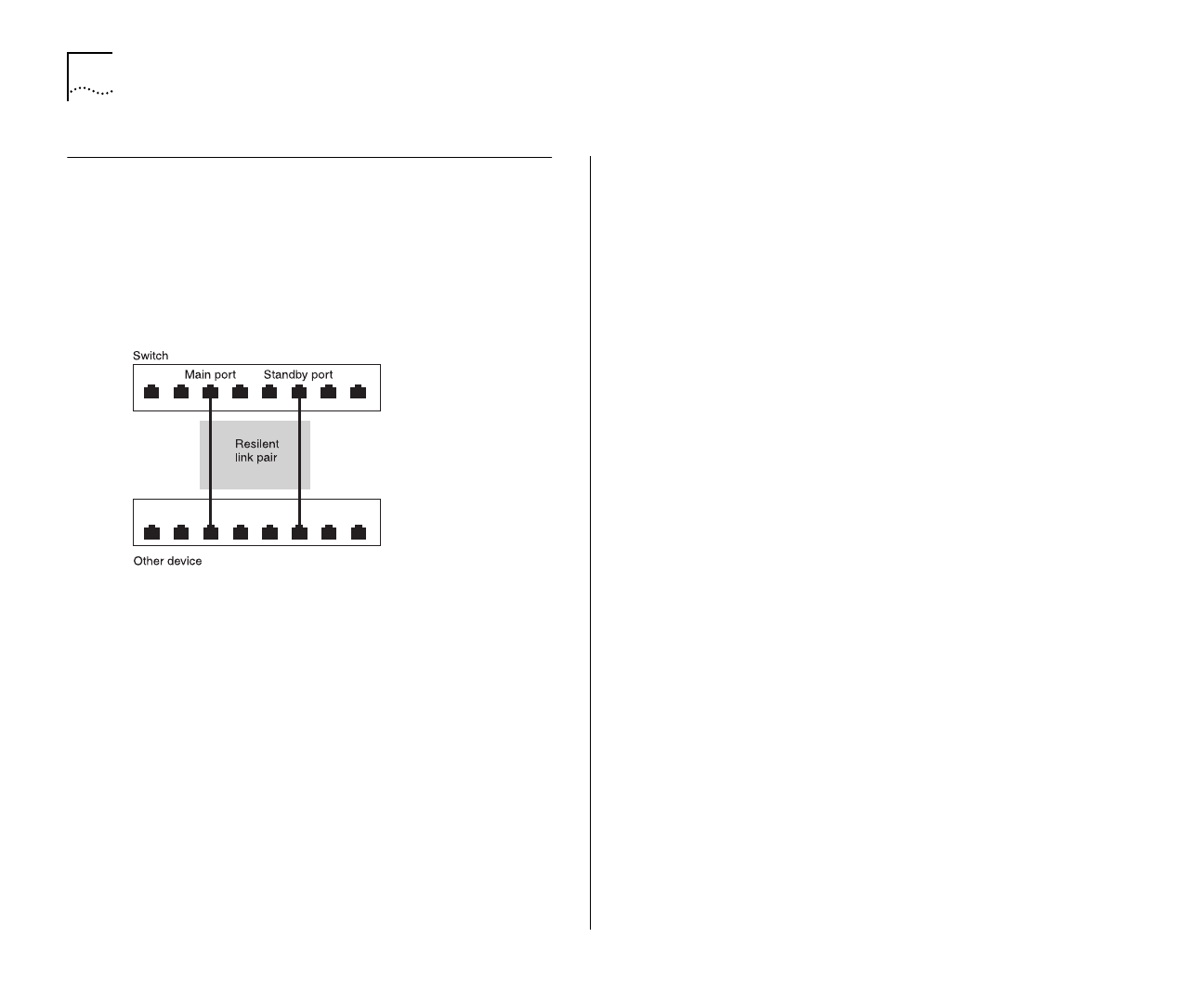
4-18 C
HAPTER
4: M
ANAGING
T
HE
S
WITCH
3000 TX
Setting Up Resilient Links
You can configure a Switch to provide resilient links
to another device so that network disruption is mini-
mized if a link fails. A
resilient link pair
consists of a
main link and a standby link. You define a resilient
link pair by specifying the main port and standby
port at one end of the pair.
Figure 4-13
Resilient link pair
Under normal network operating conditions, the
main link carries the data. The Receive Idle signal of
a fiber link or the Test Pulse on an Ethernet twisted
pair link is continually monitored by the Switch. If a
signal loss is detected, the Switch immediately
enables the standby port so that it carries the data.
In addition, the main port is disabled.
If a main link has a higher bandwidth than its
standby link, traffic is automatically switched back to
the main link provided no loss of link is detected for
two minutes. Otherwise, you need to manually
switch traffic back to the main link.
When setting up resilient links, you should note the
following:
■
Up to four resilient link pairs can be configured
on a Switch 3000 TX.
■
Resilient links cannot be set up if Spanning Tree
(STP) is enabled on the Switch.
■
A resilient link pair can only be set up if:
■
The ports belong to the same VLAN.
■
Neither of the ports forms part of another
resilient link pair.
■
If the main port is a Virtual LAN Trunk (VLT) port,
the standby port must also be a VLT port.
■
A resilient link pair must be defined at only one
end of the connection.
■
You cannot disable any port that is part of a resil-
ient link pair.


















